Maintaining an indoor air quality is optional, but a necessity, and the need mostly occurs when managing a construction site, during mold remediation, or fire restoration. When you go out to the market looking for air filtration equipment, you will likely come across two common solutions: negative air machines and air scrubbers. Both are designed to filter contaminants, but they serve different purposes.
If you are unsure which one is right for your project, this guide is for you!
What is a Negative Air Machine?
A negative air machine, which is also known as an air mover or air filtration device, is a powerful ventilation unit designed to create a pressure differential within an enclosed space. Its primary purpose is to pull air out of a contaminated area, filter it, and exhaust it outside or into a contained system.
How Negative Air Machines Work?
The setup of a negative air machine can be found in our detailed guide here: How to Set Up a Negative Air Machine. However, here are some key points:
● This machine sucks in contaminated air from the workspace.
● Then the air passes through a HEPA filter and traps harmful particles.
● The filtered air is then vented outside via ducting.
Features
● It stops contaminated air from going outside of the work zone and spreading to clean areas.
● They have high-efficiency HEPA filters to capture microscopic particles such as 0.3 microns or larger with 99.97% efficiency.
● Negative air machines connect to ductwork for controlled exhaust.
● Delivers high airflow (CFM)
Best Uses for Negative Air Machines
Negative air machines are usually used in conditions where containing airborne contaminants is necessary. During asbestos abatement, these machines can prevent the spread of hazardous asbestos fibers throughout the building. In mold remediation, they help ensure that mold spores do not travel to the clean area.
They are also essential during lead paint removal, where controlling the spread of lead dust is important for safety. In healthcare settings or laboratory containment zones, negative air machines are used to separate infectious diseases or protect sensitive research environments by maintaining controlled airflow.
On construction and demolition sites, they help keep dust and fine particles confined within the work area. Negative air machines also help with odor control by removing strong or unpleasant smells from a sealed space through filtered exhaust systems.
What is an Air Scrubber?
An air scrubber is a portable air purifier or air filtration system that cleans and recirculates air within a space. It is not like a negative air machine because it does not create negative pressure; instead, it continuously filters the air to remove contaminants. Get the best HEPA air scrubbers from Abestorm.

How Air Scrubbers Work?
● The scrubber draws in polluted air.
● Then the air passes through multiple filters, like a pre-filter, HEPA, and sometimes activated carbon.
● The clean air is released back into the room.
Features
● Filter and return air to the same environment.
● Multi-Stage filtration
● Improves ambient air quality.
● Highly portable system
Common Applications of Air Scrubbers
Air scrubbers are versatile machines that can be used in various settings to improve indoor air quality. Use them during water damage restoration to eliminate mold spores and reduce musty odors.
During post-construction cleanup, air scrubbers can capture fine dust, drywall particles, and other debris present in the air.
They are also valuable in remodeling projects to maintain lower dust levels in active work zones. In the case of smoke and fire damage restoration, air scrubbers filter out harmful soot and smoke particles, often using carbon filters to neutralize odors. For allergen control, they improve air quality for individuals sensitive to dust, pollen, or pet dander.
Negative Air Machine vs. Air Scrubber: Differences
Negative air machines and air scrubbers both improve indoor air quality but operate differently in terms of containment and filtration. For detailed standards on air filtration and containment, refer to the EPA Indoor Air Quality guidelines.
|
Feature |
Negative Air Machine |
Air Scrubber |
|
Primary Function |
Creates negative pressure; Exhausts contaminated air |
Recirculates and cleans air |
|
Airflow Direction |
Pulls air out of a space; creates suction |
Draws in, filters, and returns air to the same space |
|
Containment |
Essential for creating and maintaining containment |
Cleans the air within an existing open space |
|
Pressure |
Creates lower pressure inside the work area |
No pressure differential created (neutral pressure) |
|
Ducting |
They are ducted to exhaust outside |
Usually operates as a standalone unit; no external ducting required for basic function |
|
Hazard Control |
Prevents the spread of dangerous particles |
Reduces existing airborne particles |
|
Typical Use Case |
Mold remediation, asbestos removal, lead abatement, and infectious control |
Water damage, post-construction dust, and general indoor air quality improvement |
Similarities Between Negative Air Machines and Air Scrubbers
These two essential air purification devices also have some similar characteristics:
● Both feature HEPA filters to catch microscopic airborne particles.
● Both units have the same purpose of cleaning the air and removing contaminants.
● Most models of both types are relatively portable.
● They are built for demanding professional environments, like restoration equipment and construction cleanup.
Make the Right Choice!
Negative air machines and air scrubbers are useful units used for air purification and managing indoor air quality. However, both work differently and in different environments.
By understanding these differences, you can get the right restoration equipment to achieve superior indoor air quality and ensure safety on any project.
Always consider the specific contaminants, the need for containment, the desired outcome, and the number of negative air machines required before making your selection.

FAQs
Can I use an air scrubber as a negative air machine?
Some air scrubbers are convertible into negative air machines by attaching ducts and sealing the area. However, not all air scrubbers are designed for this function, so it's important to check the manufacturer’s specifications.
Do I need a negative air machine for mold remediation?
Yes. A negative air machine is essential for mold remediation because it prevents mold spores from spreading to clean areas by creating a controlled negative pressure environment.
Are air scrubbers safe to use in homes with pets and children?
They are safe for residential use and can even improve indoor air quality by removing allergens, pet dander, smoke, and odors.
How long should I run an air scrubber after construction?
It's recommended to run an air scrubber for 24 to 48 hours after construction work to remove airborne dust and particles. However, duration may vary according to the size of the space and level of contamination.

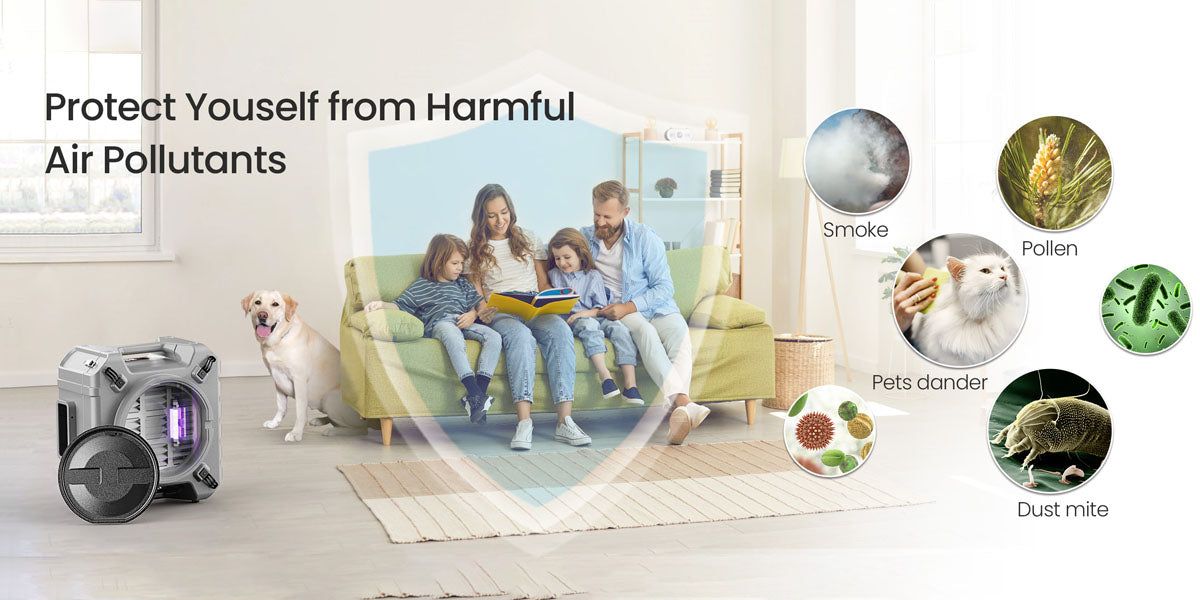

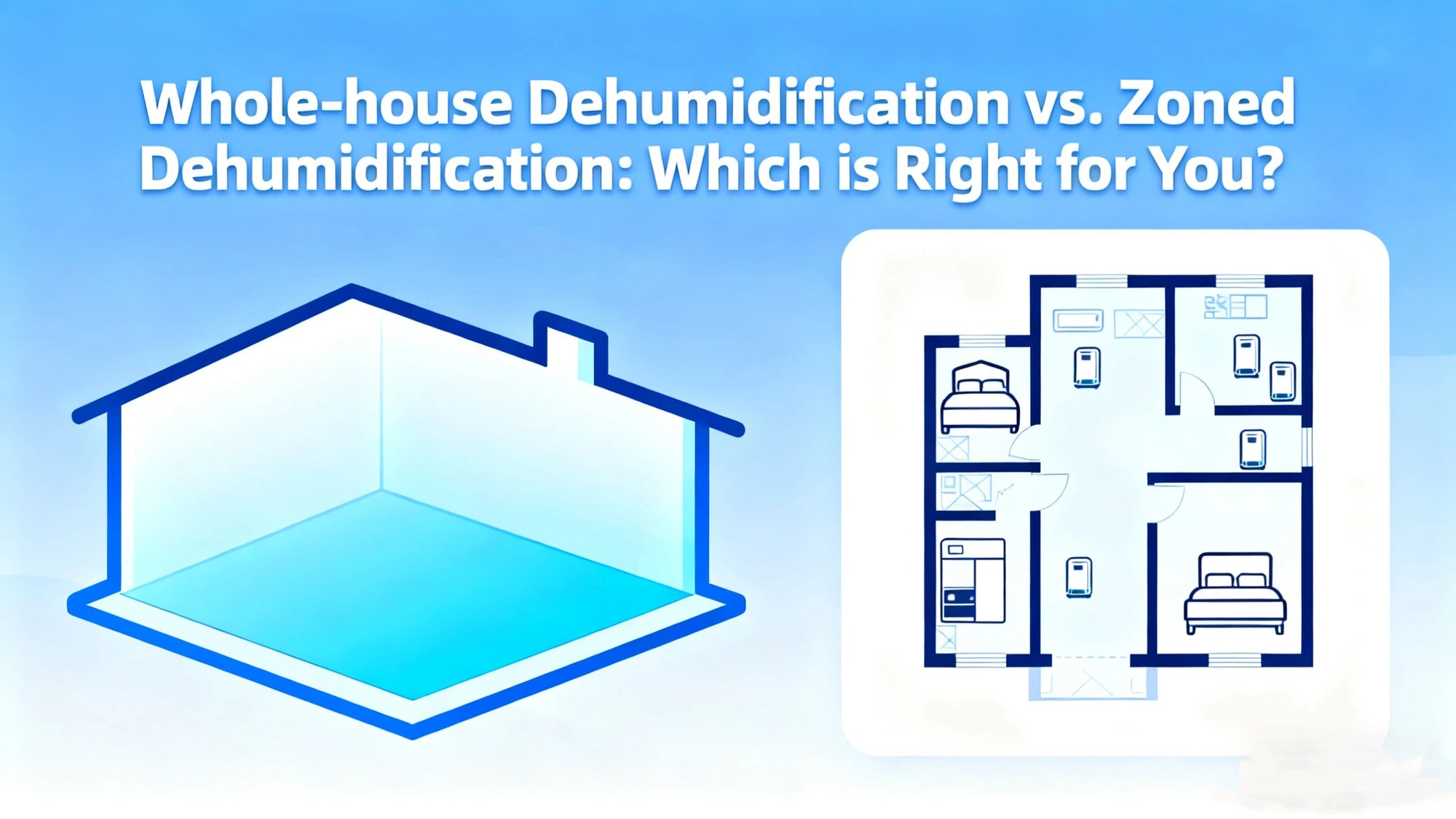
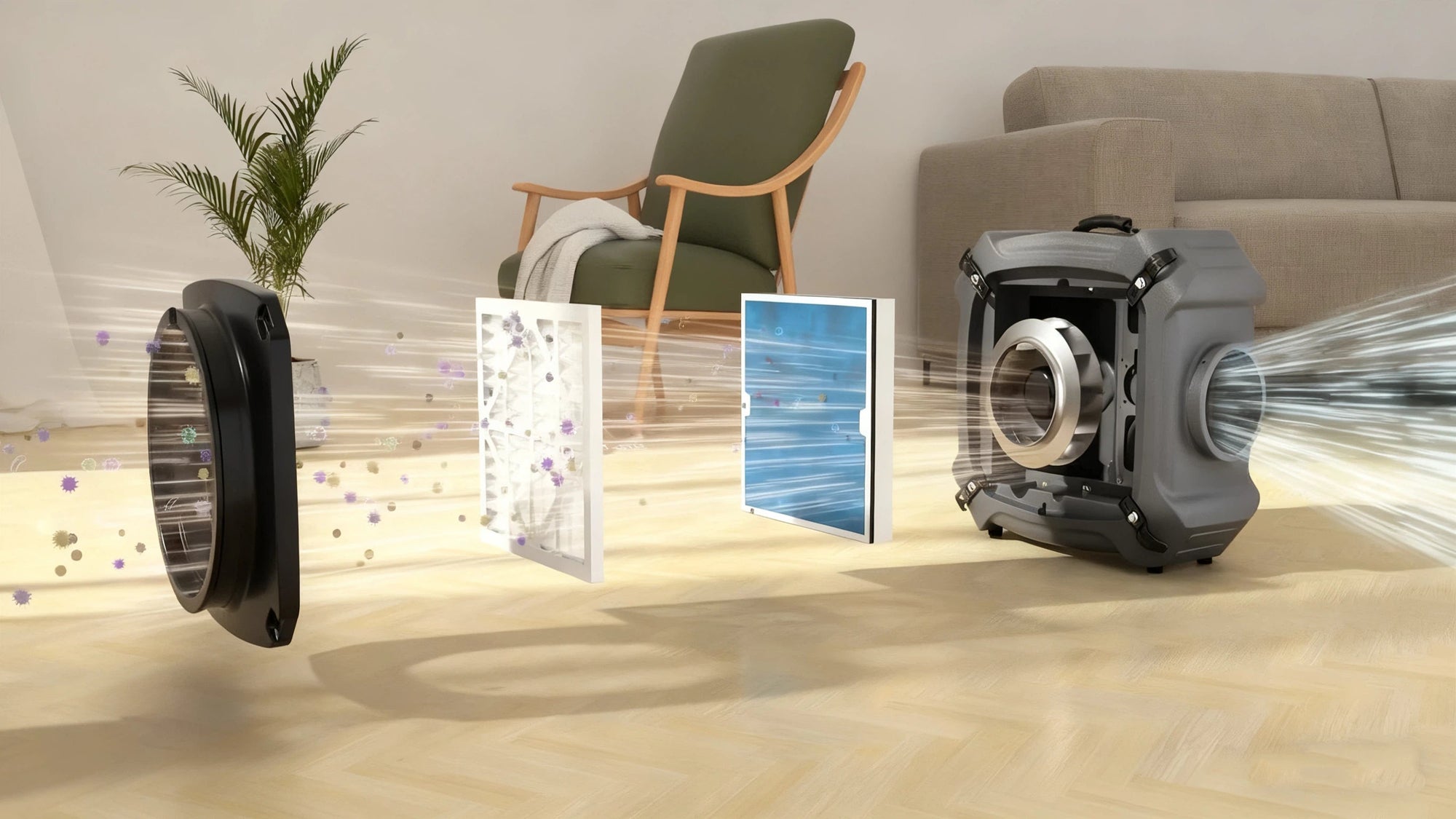
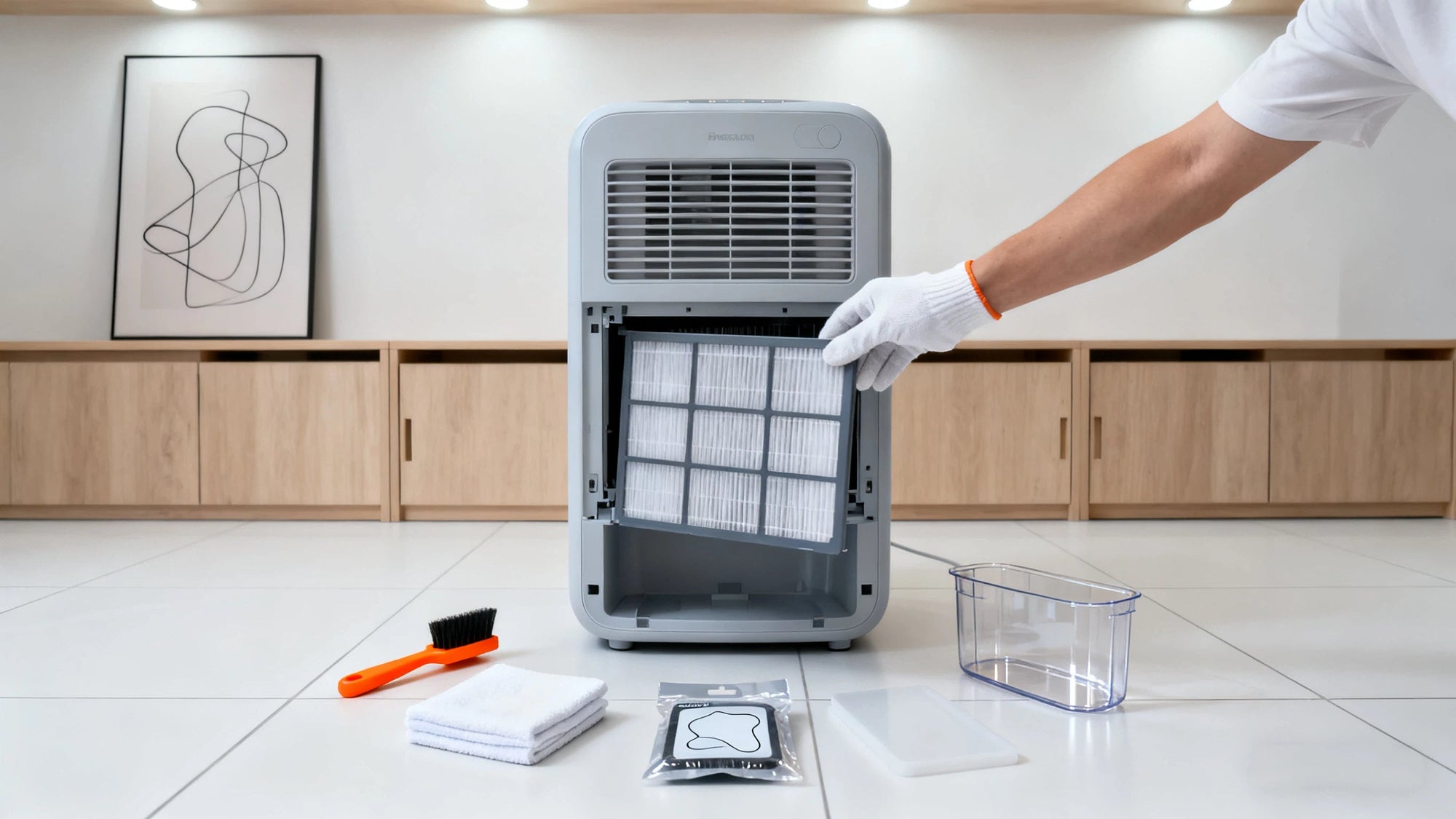
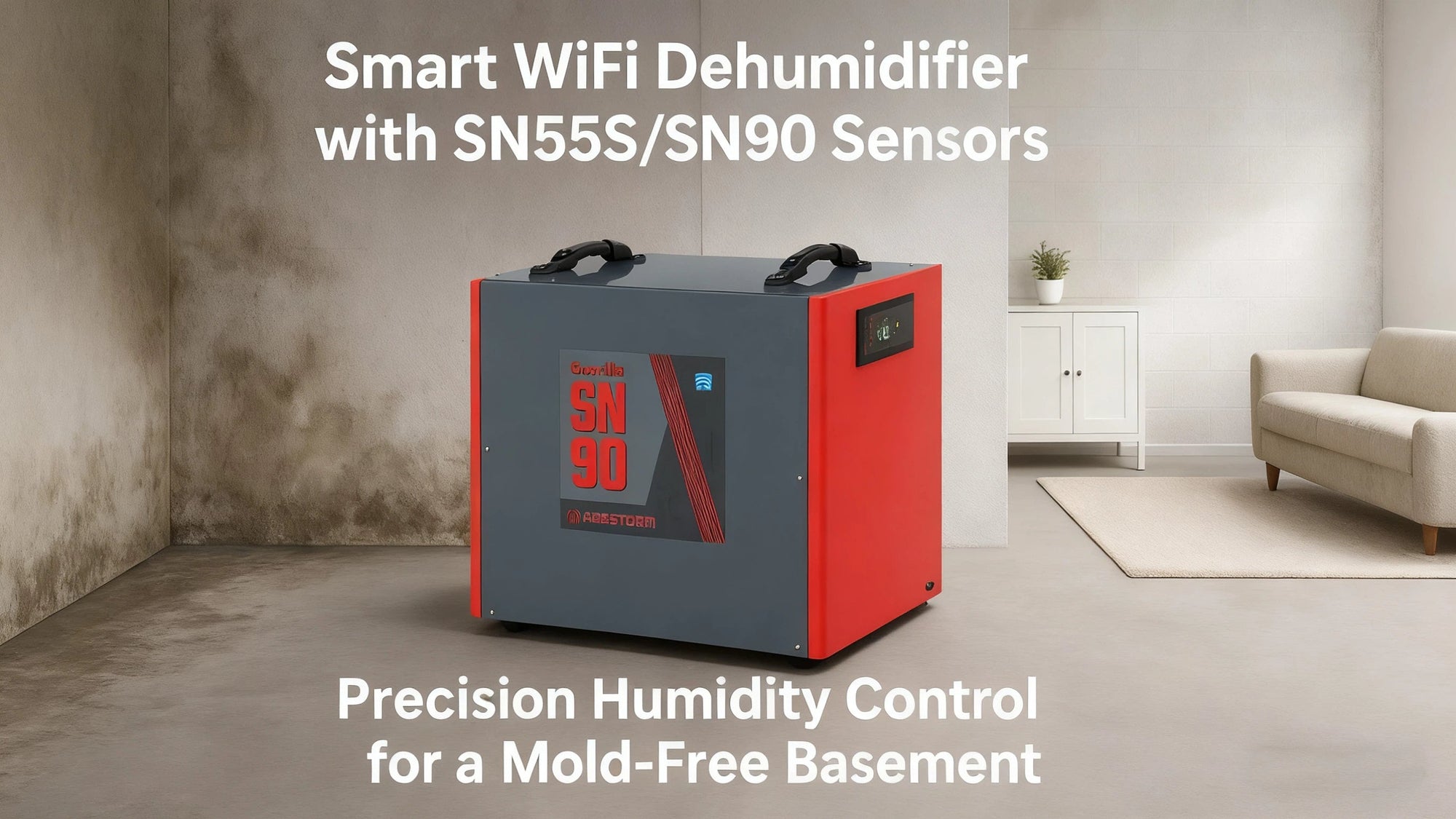
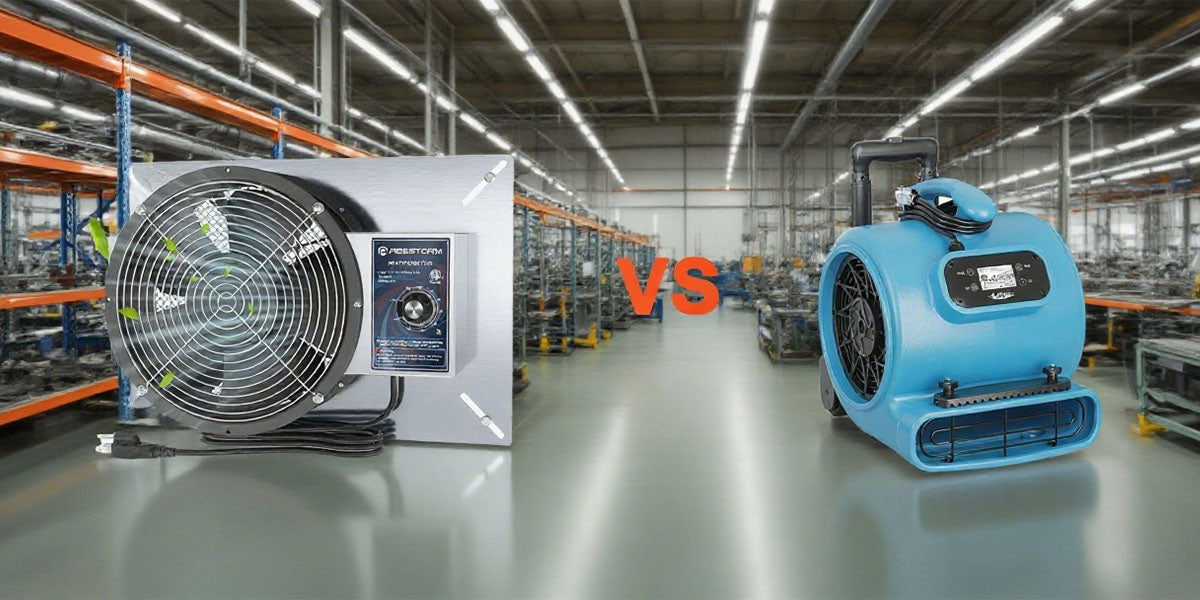
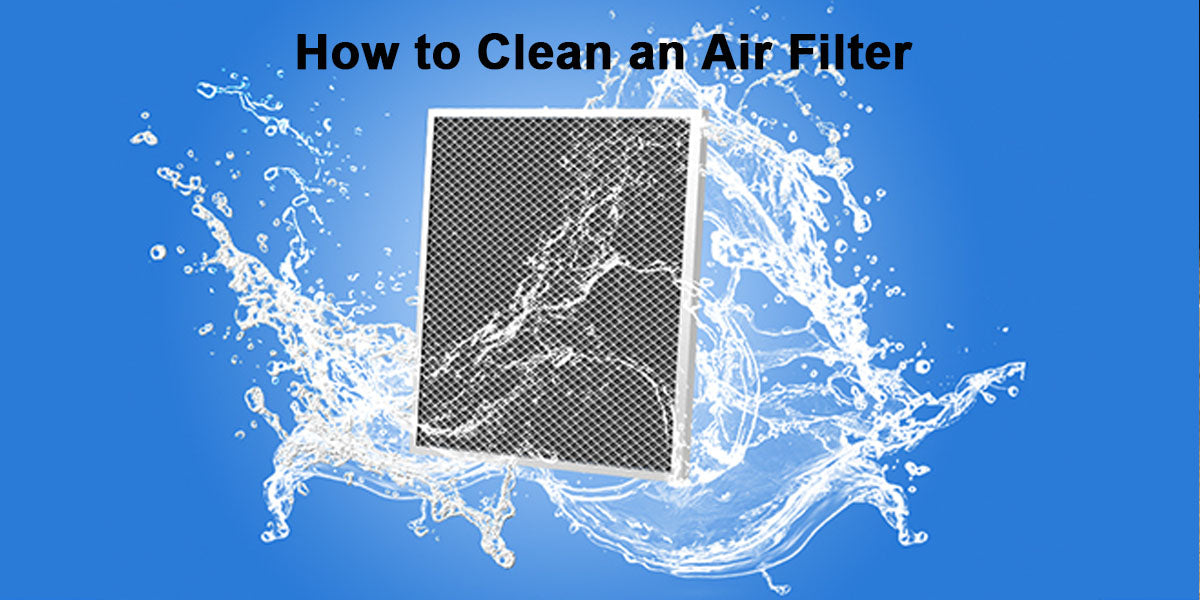
Shop For Dehumidifier
Abestorm 170 PPD 2,100 Sq.Ft Commercial Dehumidifier with Pump and Drain Hose | Hurricane 800
Abestorm 180 PPD 2,300 Sq.Ft Commercial Dehumidifier with Pump and Drain Hose | Hurricane LGR85
Abestorm 180 PPD 2,300 Sq.Ft Smart WIFI Commercial Dehumidifier with Pump and Drain Hose | Hurricane LGR85-Grey (wifi app not available now)
Abestorm 264 PPD 3,000 Sq.Ft Commercial Dehumidifier with Pump and Drain Hose | Hurricane 125P